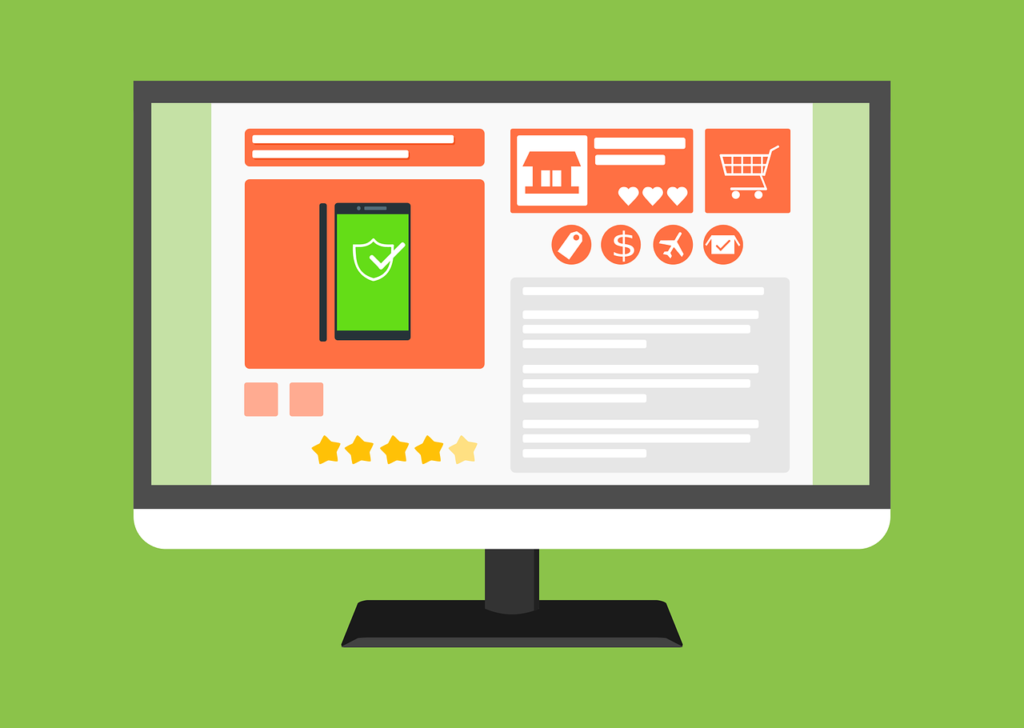In the digital age, having a strong online presence is crucial for any business. It’s not just about being online; it’s about being visible and engaging in ways that attract and retain customers. These ideas are practical, easy to implement, and designed to help your business stand out in a crowded market. Let’s dive in and discover how you can enhance your online presence effectively.
Optimizing Your Website for SEO
Understanding SEO Basics
Search Engine Optimization (SEO) is the foundation of any strong online presence. SEO involves optimizing your website so that it ranks higher in search engine results pages (SERPs).
Start by understanding the basics: keyword research, on-page SEO, and off-page SEO.
Keywords are the terms and phrases that potential customers type into search engines. Identify the keywords that are relevant to your business and incorporate them naturally into your website content.
On-page SEO includes optimizing elements like meta titles, meta descriptions, headers, and images. Off-page SEO involves activities like backlink building and social media engagement.
Conduct Thorough Keyword Research
Keyword research is the foundation of effective SEO. It involves identifying the words and phrases that your target audience uses when searching for products or services like yours. Start by using tools like Google Keyword Planner, SEMrush, or Ahrefs to discover relevant keywords.
Focus on long-tail keywords as they are less competitive and more targeted.
Implement Mobile Optimization
With the majority of searches now occurring on mobile devices, mobile optimization is no longer optional. Ensure your website is responsive, meaning it adjusts seamlessly to different screen sizes.
Test your site’s mobile-friendliness using Google’s Mobile-Friendly Test tool. A mobile-optimized website not only improves user experience but also boosts your search engine rankings.
Optimize for Voice Search
With the rise of voice-activated devices, optimizing for voice search is becoming increasingly important. Voice searches tend to be more conversational and question-based.
Incorporate natural language and question phrases into your content. Focus on long-tail keywords and provide clear, concise answers to common questions related to your industry.
Creating High-Quality Content
Content is king in the world of SEO. High-quality, relevant content not only helps you rank higher in search results but also engages and retains visitors. Focus on creating content that addresses the needs and interests of your audience.
This could include blog posts, articles, videos, infographics, and more.
For instance, if you run a fitness website, you could create content on workout routines, nutrition tips, and success stories. Consistently publishing valuable content helps establish your authority in your niche and encourages visitors to return to your site.
Utilize Advanced SEO Tools and Analytics
Advanced SEO tools can provide insights that help refine your strategy. Tools like Google Analytics, Google Search Console, and Moz can help you monitor your site’s performance, track keyword rankings, and identify issues that need fixing.
Regularly analyze your data to understand what’s working and what’s not, and adjust your strategy accordingly.
Leveraging Social Media Marketing
Choosing the Right Platforms
Social media is a powerful tool for boosting your online presence. However, not all platforms are created equal.
Choose the platforms that are most relevant to your audience. Facebook, Instagram, Twitter, LinkedIn, and Pinterest each have their unique strengths and user demographics.
For example, if you’re targeting a younger audience, platforms like Instagram and TikTok might be more effective. For B2B marketing, LinkedIn is a great platform. Focus your efforts on the platforms where your audience is most active.
Engaging with Your Audience
Social media is not just about posting content; it’s about engaging with your audience. Respond to comments, answer questions, and participate in conversations.
Show your audience that you value their input and are interested in building a relationship with them.
Create interactive content like polls, quizzes, and live videos to encourage engagement. Host Q&A sessions, webinars, or live streams to connect with your audience in real-time. This not only increases engagement but also helps build a community around your brand.
Email Marketing Strategies
Building an Email List
Email marketing remains one of the most effective ways to reach and engage your audience. Start by building a robust email list. Offer valuable incentives such as free E-books, discounts, or exclusive content to encourage visitors to subscribe.
Ensure your signup forms are easy to find and fill out. Place them on your homepage, blog posts, and social media profiles.
Once you have a list, segment your subscribers based on their interests and behaviors to send more personalized and relevant content.
Crafting Compelling Emails
Crafting compelling emails is key to successful email marketing. Your emails should be visually appealing, easy to read, and offer clear value.
Use engaging subject lines to increase open rates and write concise, compelling copy to keep readers interested.
Include strong calls-to-action (CTAs) that encourage readers to take the next step, whether it’s visiting your website, making a purchase, or sharing your content.
Regularly analyze your email performance and make adjustments to improve open rates, click-through rates, and conversions.
Utilizing Content Marketing
Developing a Content Strategy
Content marketing is about creating and sharing valuable content to attract and engage your audience. A well-defined content strategy is crucial.
Start by identifying your target audience and understanding their needs and preferences. This will help you create content that resonates with them.
Plan a mix of content types, including blog posts, videos, infographics, and podcasts. Establish a content calendar to ensure consistent publishing.
Focus on creating evergreen content that remains relevant over time, as well as timely content that addresses current trends and events.
Promoting Your Content
Creating great content is only half the battle; you also need to promote it effectively. Share your content across multiple channels, including social media, email newsletters, and online communities.
Collaborate with influencers and other brands to expand your reach.
Consider using paid promotion, such as social media ads or sponsored posts, to get your content in front of a larger audience. Track the performance of your content and adjust your promotion strategies based on what works best.
Implementing Video Marketing
Creating Engaging Videos
Video marketing is one of the most engaging forms of content. Videos can convey complex information quickly and effectively, making them ideal for product demonstrations, tutorials, and testimonials.
Focus on creating high-quality, engaging videos that capture your audience’s attention.
For example, a cooking channel could create recipe videos that not only show how to make a dish but also tell the story behind it. Use a mix of live-action and animated videos to keep your content fresh and interesting.
Utilizing YouTube and Other Platforms
YouTube is the second largest search engine in the world and a powerful platform for video marketing. Optimize your videos for search by using relevant keywords in your titles, descriptions, and tags.
Create engaging thumbnails and use end screens and annotations to encourage viewers to watch more of your content.
Don’t limit yourself to YouTube. Share your videos on social media platforms like Facebook, Instagram, and TikTok. Each platform has its own strengths, so tailor your videos to fit the format and audience of each.
Harnessing the Power of Influencer Marketing

Identifying the Right Influencers
Influencer marketing involves partnering with individuals who have a large and engaged following. The key is to find influencers who align with your brand values and have a genuine connection with your target audience. Look for influencers who create content related to your industry and have a track record of high engagement.
For instance, a beauty brand could partner with makeup artists and beauty bloggers who review and demonstrate products. This not only increases brand awareness but also provides social proof that can influence purchasing decisions.
Building Authentic Relationships
Authenticity is crucial in influencer marketing. Instead of just paying influencers to promote your products, build genuine relationships with them. Involve them in the creation process and give them creative freedom to present your products in a way that resonates with their audience.
For example, invite influencers to your events, send them personalized products, and collaborate on exclusive collections. This approach creates more authentic and impactful content that their followers will trust and engage with.
Optimizing for Local SEO
Targeting Local Audiences
Local SEO helps you attract customers in your geographic area. Optimize your website and online presence to target local search terms.
This includes adding your business address, phone number, and opening hours to your website and online directories.
Claim and optimize your Google My Business listing. Encourage satisfied customers to leave positive reviews, as these can significantly impact your local search rankings.
Additionally, create locally relevant content, such as blog posts about local events or community involvement.
Engaging with the Local Community
Engaging with the local community can enhance your online presence and build strong customer relationships. Sponsor local events, participate in community activities, and collaborate with other local businesses.
Share these activities on your website and social media to highlight your community involvement.
For example, a local café could host a charity event and share photos and stories from the event on their website and social media. This not only boosts their local presence but also demonstrates their commitment to the community.
Embracing Influencer Partnerships
Collaborating with Micro-Influencers
While working with top-tier influencers can be impactful, collaborating with micro-influencers can also provide significant benefits. Micro-influencers, who typically have between 1,000 to 100,000 followers, often have highly engaged audiences.
Their followers trust their opinions and recommendations, which can lead to higher engagement and conversions.
Identify micro-influencers within your niche who align with your brand values. Reach out to them with personalized proposals for collaboration. This could include product reviews, social media takeovers, or joint content creation.
Building genuine relationships with micro-influencers, you can leverage their influence to reach new audiences.
Creating Long-Term Partnerships
Instead of one-off campaigns, focus on creating long-term partnerships with influencers. This approach allows influencers to become true advocates for your brand, building deeper trust with their followers over time.
Long-term collaborations can include recurring content, ambassador programs, and exclusive product lines.
For instance, a fashion brand could partner with an influencer to release a seasonal collection. This not only boosts brand visibility but also creates excitement and exclusivity around the product launch.
Investing in Content Marketing
Blogging for Business
Blogging remains a powerful tool for boosting your online presence. Regularly publishing high-quality blog posts can improve your SEO, establish your authority in your industry, and attract a steady stream of organic traffic.
Focus on topics that address your audience’s pain points and interests.
For example, a home improvement store could create a blog with DIY project ideas, home maintenance tips, and product guides. This type of content provides value to readers and encourages them to visit the store for their home improvement needs.
Podcasting to Reach a New Audience
Podcasts are gaining popularity as a content format that allows brands to reach audiences in a more personal and engaging way. Start a podcast that covers topics relevant to your industry and audience.
Invite industry experts, share insights, and provide valuable information.
A tech company, for example, could start a podcast discussing the latest trends in technology, interviews with experts, and behind-the-scenes looks at their projects. This can position the company as a thought leader and attract a loyal following.
Utilizing Webinars and Live Streaming
Hosting Educational Webinars
Webinars are an excellent way to educate your audience while showcasing your expertise. Host webinars on topics that are relevant to your audience’s needs and interests.
Provide actionable insights, tips, and strategies that attendees can apply.
For instance, a marketing agency could host webinars on topics like social media strategies, SEO techniques, and content marketing best practices. By providing valuable information, you can attract potential clients and demonstrate your expertise.
Engaging with Live Streaming
Live streaming allows you to interact with your audience in real-time, creating a more personal and immediate connection. Use platforms like Facebook Live, Instagram Live, or YouTube Live to broadcast events, product launches, behind-the-scenes content, and Q&A sessions.
For example, a beauty brand could use live streaming to demonstrate makeup application techniques, showcase new product launches, and answer audience questions. This not only engages viewers but also provides an opportunity to highlight products and boost sales.
Enhancing Your Online Listings

Optimizing Google My Business
Google My Business is a crucial tool for local SEO and online visibility. Ensure your Google My Business listing is complete and optimized.
This includes providing accurate business information, adding high-quality photos, and encouraging customer reviews.
Regularly update your listing with new photos, posts, and special offers to keep it fresh and engaging. Respond to reviews promptly to show customers that you value their feedback and are committed to providing excellent service.
Leveraging Online Directories
List your business on relevant online directories to increase your online presence and improve your SEO. Ensure your business information is consistent across all directories to avoid confusion and boost your search engine rankings.
For example, a local restaurant should be listed on directories like Yelp, TripAdvisor, and local business directories. Regularly monitor and update these listings to ensure they accurately reflect your business and its offerings.
Leveraging Pay-Per-Click (PPC) Advertising
Crafting Effective PPC Campaigns
Pay-Per-Click (PPC) advertising is a powerful way to drive traffic to your website and boost your online presence. Crafting effective PPC campaigns starts with keyword research.
Identify the keywords that potential customers are likely to use when searching for your products or services. Use tools like Google Keyword Planner to find relevant keywords with high search volume and low competition.
Once you have your keywords, create compelling ad copy that grabs attention and encourages clicks. Focus on the benefits of your products or services and include a strong call-to-action.
Ensure your landing pages are optimized to convert visitors by providing relevant information and a clear path to purchase or contact.
Utilizing Retargeting Strategies
Retargeting is a PPC strategy that targets users who have previously visited your website but did not convert. By showing them tailored ads as they browse other websites or social media, you can bring them back and encourage them to complete their purchase.
For example, an online retailer could retarget users who added items to their cart but didn’t complete the checkout process. By showing them ads featuring the items they left behind, along with a special discount, you can increase the chances of conversion.
Implementing Affiliate Marketing
Building an Affiliate Network
Affiliate marketing involves partnering with affiliates who promote your products in exchange for a commission on sales. Start by building a network of affiliates who are relevant to your industry and have a strong online presence.
Provide them with marketing materials, such as banners, links, and promotional content, to help them promote your products effectively.
For instance, a software company could partner with tech bloggers and influencers who review and recommend their products. By offering a commission for each sale generated through their referrals, you can incentivize them to promote your products to their audience.
Monitoring and Optimizing Affiliate Performance
Regularly monitor the performance of your affiliates to ensure they are driving quality traffic and conversions. Use analytics tools to track sales, clicks, and other key metrics.
Provide ongoing support and training to help your affiliates improve their performance.
Optimize your affiliate program by identifying top-performing affiliates and offering them higher commissions or exclusive promotions. This encourages them to continue promoting your products and can lead to even greater results.
Enhancing Website User Experience (UX)
Improving Website Navigation
A user-friendly website is essential for retaining visitors and encouraging conversions. Improve your website navigation by ensuring it is intuitive and easy to use.
Use clear labels, organized menus, and a logical structure to help users find what they’re looking for quickly.
For example, an e-commerce site should categorize products clearly and provide filters and search functionality to help users narrow down their options.
The easier it is for users to navigate your site, the more likely they are to stay and make a purchase.
Optimizing for Mobile
With more people accessing the internet via mobile devices, optimizing your website for mobile is crucial. Ensure your site is responsive, meaning it adjusts to different screen sizes and devices.
Test your site on various mobile devices to ensure it provides a seamless experience.
For example, ensure that buttons and links are large enough to be tapped easily, and that content is readable without having to zoom in. A mobile-friendly site improves user experience and can positively impact your search engine rankings.
Utilizing Customer Reviews and Testimonials

Encouraging Customer Reviews
Customer reviews and testimonials are powerful tools for building trust and credibility. Encourage your satisfied customers to leave reviews on your website, social media, and review platforms like Google and Yelp.
Make it easy for them to leave reviews by providing clear instructions and links.
For example, after a purchase, send a follow-up email thanking the customer and asking them to share their feedback. Offer incentives, such as discounts on future purchases, to encourage more reviews.
Showcasing Testimonials
Showcase customer testimonials on your website and marketing materials. Highlight positive reviews and success stories to build trust with potential customers.
Use a mix of text, images, and videos to make the testimonials more engaging and impactful.
For instance, a fitness trainer could feature client success stories on their website, including before-and-after photos and quotes from satisfied clients. This not only demonstrates the effectiveness of their services but also encourages new clients to trust and choose them.
Wrapping it up
Boosting your online presence requires a multifaceted approach that integrates various web marketing strategies. From optimizing your website for SEO and leveraging social media, to engaging in content marketing and building influencer partnerships, each tactic plays a vital role.
Investing in high-quality content, utilizing paid advertising, and enhancing customer experiences are also key components. By implementing these innovative and effective strategies, you can significantly enhance your visibility, engage your audience, and drive growth for your business.
Stay adaptable and continuously refine your approach to stay ahead in the ever-evolving digital landscape.
READ NEXT:
- Gratitude and Growth: Thanksgiving Social Media Post Ideas for Businesses
- Creative Design Ideas to Elevate Your Social Media
- Exploring the Impact of Social Media on Mental Health
- Adventurous Social Media Content Ideas for Travel Agents
- The Ultimate Guide to Search Engine Marketing Statistics in 2024






















Comments are closed.